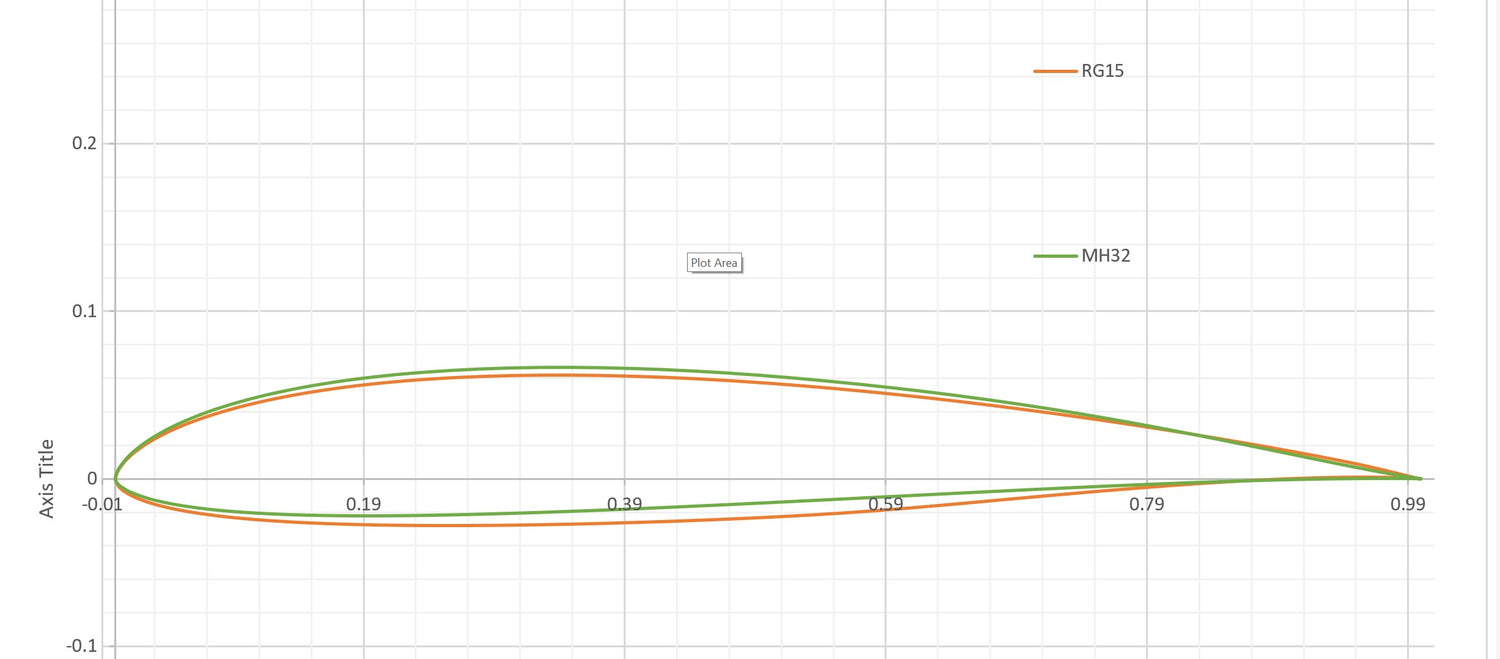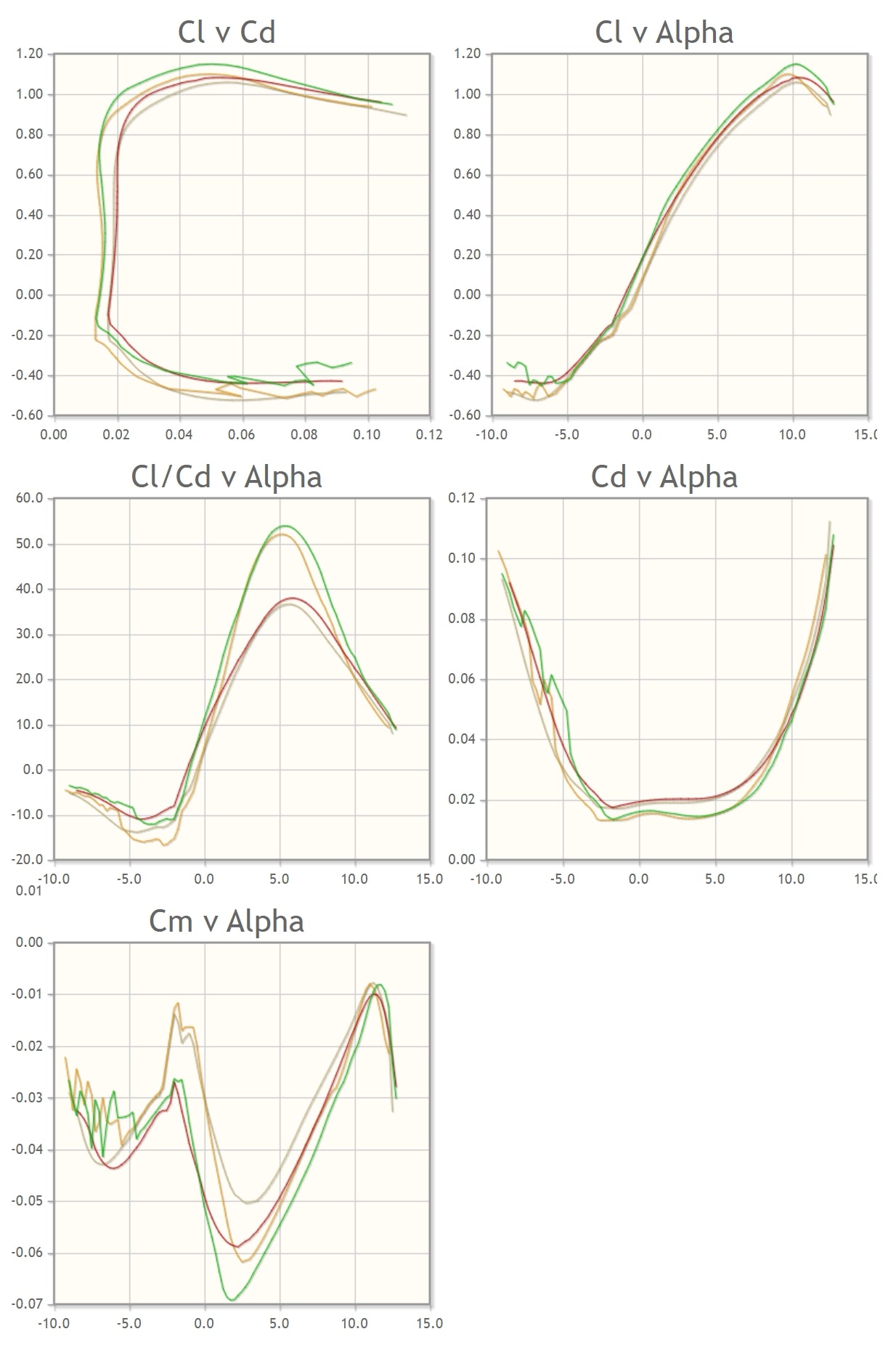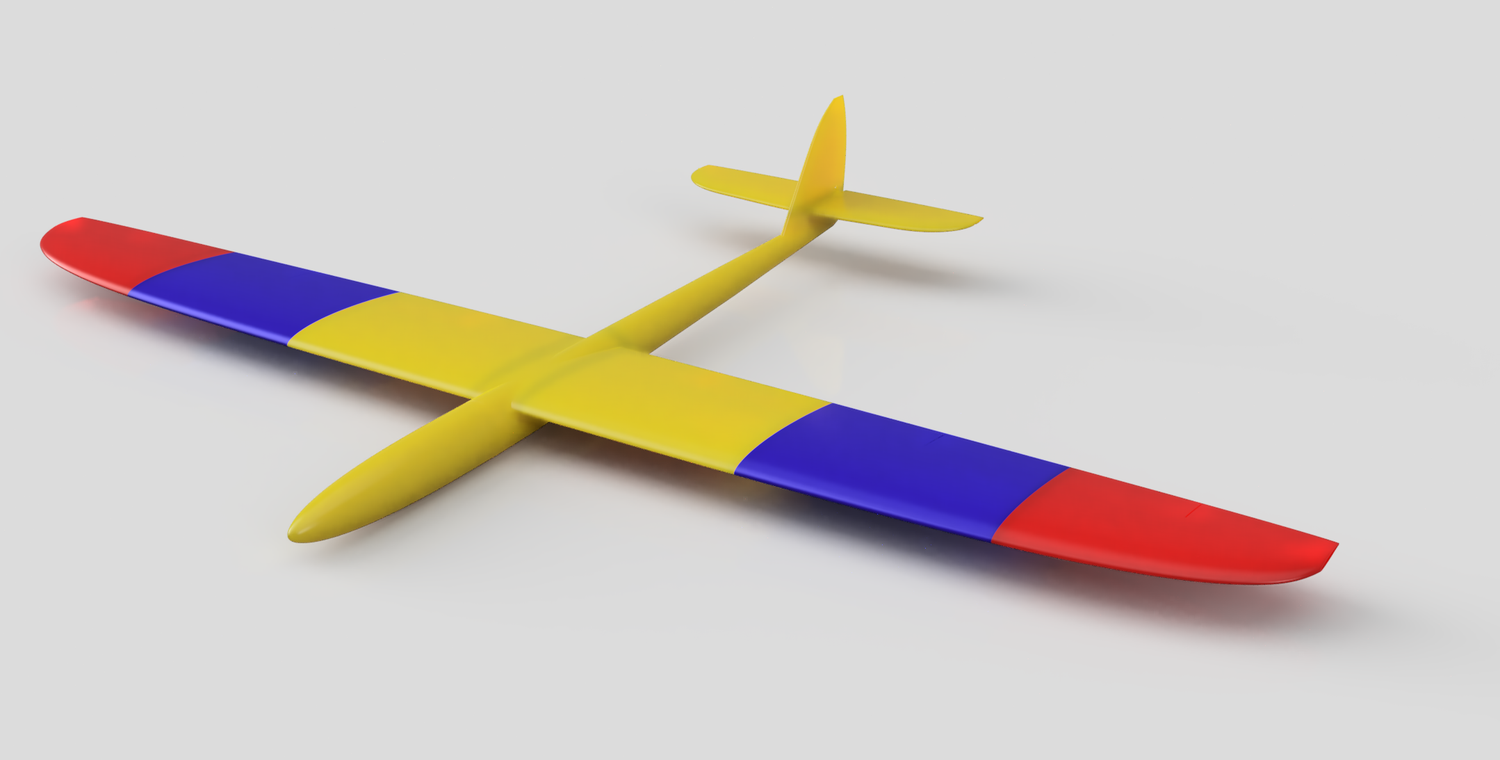Airfoils
Airfoils are an important part to how how a model can handle different flying conditions. Flying in still air, like on a flat field, versis flying in a strong wind, like when slope soaring, different airfoils perform better or worse depending on what they are suited too. For the SoarKraft models airfoils are a key ingredient for an enjoyable flying experience. Hopefully this section will help others understand which airfoil to use for the performance they are looking for.
RG15
This airfoil was designed in the late 1970s specifically for RC competition gliders competing in F3B and F3F. This airfoil and new molded glider building techniques dominated these categories for years. The RG15 is a very low drag airfoil with a wide speed range and consistent attributes. Small or large, light or heavy, this airfoil's flight characteristics remain relatively the same. This airfoil likes moderate lift and rewards with speed, acceleration, and quick response. It can travel across the sky looking for lift without losing too much altitude... and is a very capable for Dynamic Soaring with recorders over 250 mph.
Many of my favorite slope models use this airfoil from 1-meter up to 3-meter wingspans. The Destiny, Blade, Mach Dart, and the Banana are just a couple.... very fun models and the inspiration for this project's start.
This is a fantastic slope airfoil... but it does have its quirks. It has a sharp stall curve and a low moment, need to get the CG in the right place or it can be difficult and disastrous. Nose heavy is good for maiden flights, and washout was added to the wing design to help with the stall characteristics. When set right the airfoil pays off with spectacular performance and maneuverability.

Comparison - RG15 to MH32
These two airfoils are similar, but perform very different
MH32
Yes, these two airfoils look so similar... how could they perform differently???? Well, when flying a model the differences are very evident.
This airfoil was also designed for competition and in the 1990s did very well in F3B. It is a similar section to the RG15, with similar lift to drag, but has more camber. This added camber changes the lift curve and smooths out the stall drop off, lift is stronger at lower angles and the moment is greater (more stable) giving this airfoil more forgiving qualities. However the MH32 is not as fast as the RG15, but still has a wide speed range and wing loading capabilities.
This airfoil is a good parring with the power pod for faster climbs, but is also fully capable on the slope. The airfoil is not as sensitive to CG location (the higher moment) and CG location for this airfoil is nearly identical to the RG15.... making it easy to trade between these two airfoils without having to rebalance.
Below are the polar plots for these two airfoils at Reynolds numbers 50K and 100K.
MH32 - green and red
RG15 - orange and gray
Thanks to airfoiltools.com for the comparison plots.


